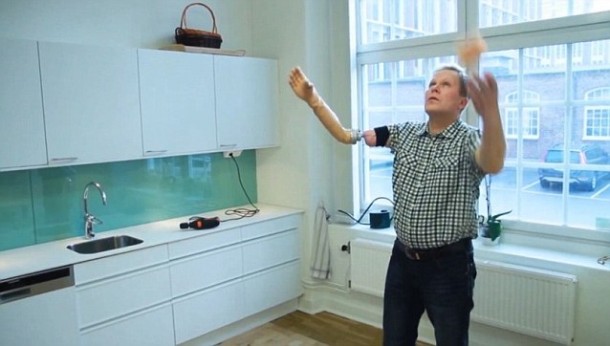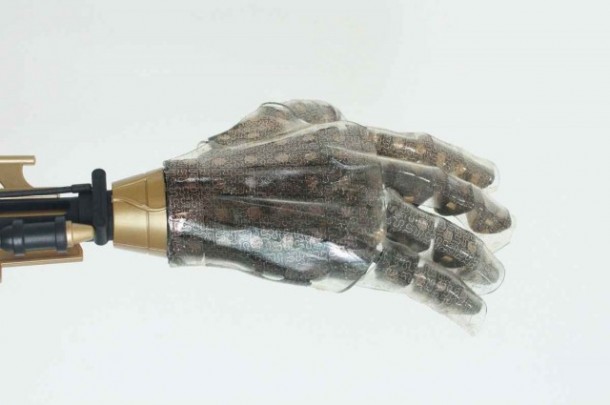The advances in science and technology have really benefited the medical science. A recent study shows that artificial skin more than meets the eye. It will now allow patients to have their sense of touch back. The research has been carried out by a Korean team. According to them, the skin they have created is very similar to the human skin; it stretches like real skin and comes with an embedded heater that imparts the feel of a living tissue.
The skin is also capable of detecting pressure, humidity and temperature. Researchers have tested the skin on a prosthetic hand and the user was able to determine if a childs diaper was wet or dry by feeling it against his skin. The published paper said, The prosthetic hand and laminated electronic skin could encounter many complex operations such as hand shaking, keyboard tapping, ball grasping, holding a cup of hot or cold drink, touching dry or wet surfaces and human to human contact.
This artificial skin has been made from a silicone material known as polydimethylsiloxane or PDMS and is transparent along with being flexible. It has been embedded with silicon nano-ribbons that are capable of electricity generation upon being stretched or squished, thus resulting in feedback that is tactile. As per the researchers, For prosthetic devices and artificial skin to feel natural, their temperature profile must be controlled to match that of the human body.
Researchers control the skins stretching ability by altering the shapes of the patterns that are created by silicon nono-ribbon. A tight and linear pattern implies that skin wont stretch much, however, a loopy pattern results in skin that can stretch by up to 16%.
Co-author of the study, Kim Dae-Hyeong, said, Currently we have demonstrated our system in small animals. But the next step is to continue the development for the advanced version, such as a complicated array of sensors that emulate real mechano- and thermo- sensory functions of the human.
The team said, Sensory receptors in human skin transmit signals from external environments to the brain. Despite advances in our understanding sensation, replication of these unique characteristics in artificial skin and prosthetics remains challenging. Corresponding electrical stimuli can then be transmitted from the prosthetic skin to the body to stimulate peripheral nerves via an ultrathin multi-electrode array, which is decorated with ceria nanoparticles for inflammation control. This design may provide unique opportunities for emerging classes of prostheses and peripheral nervous system interface technologies.
Heres to the future!
